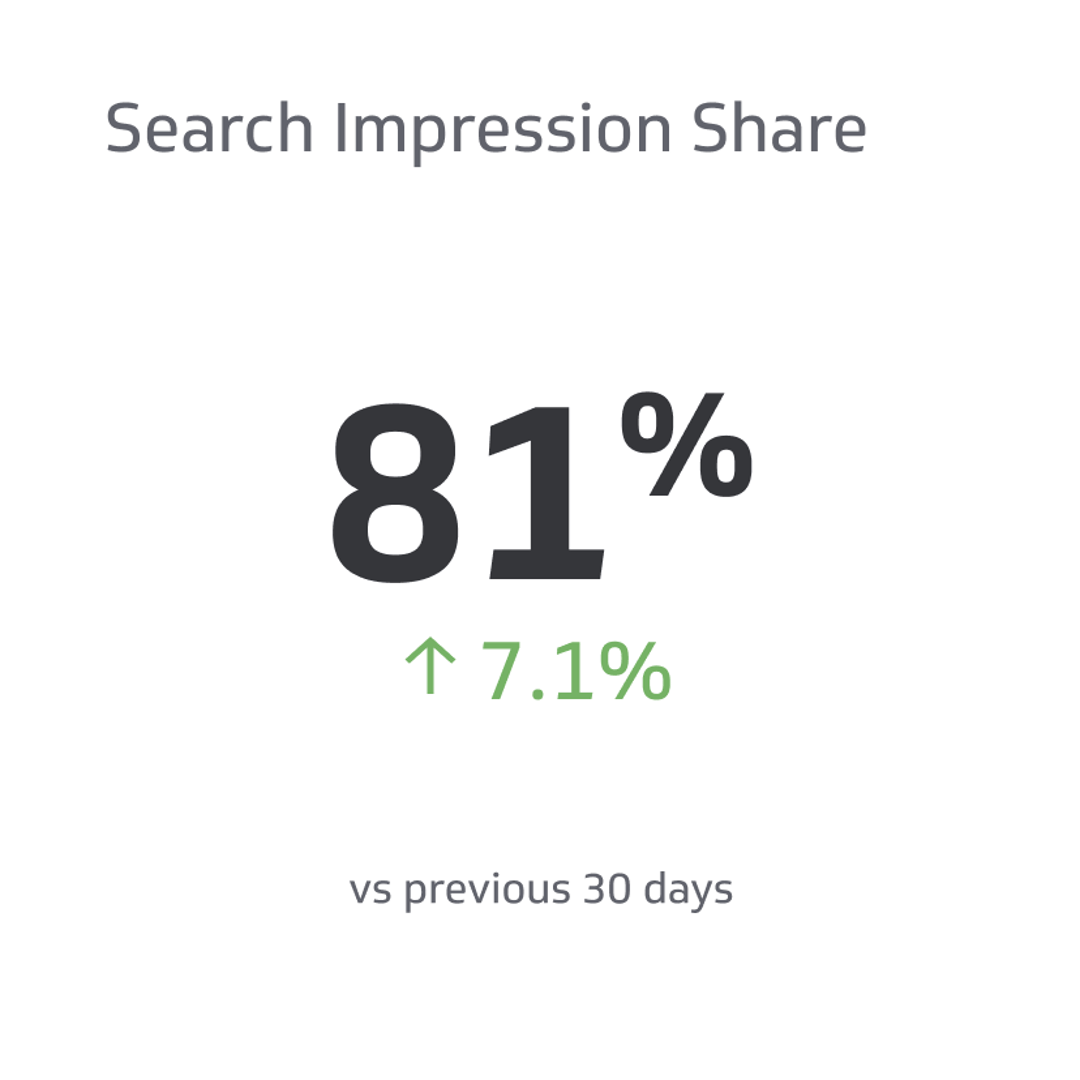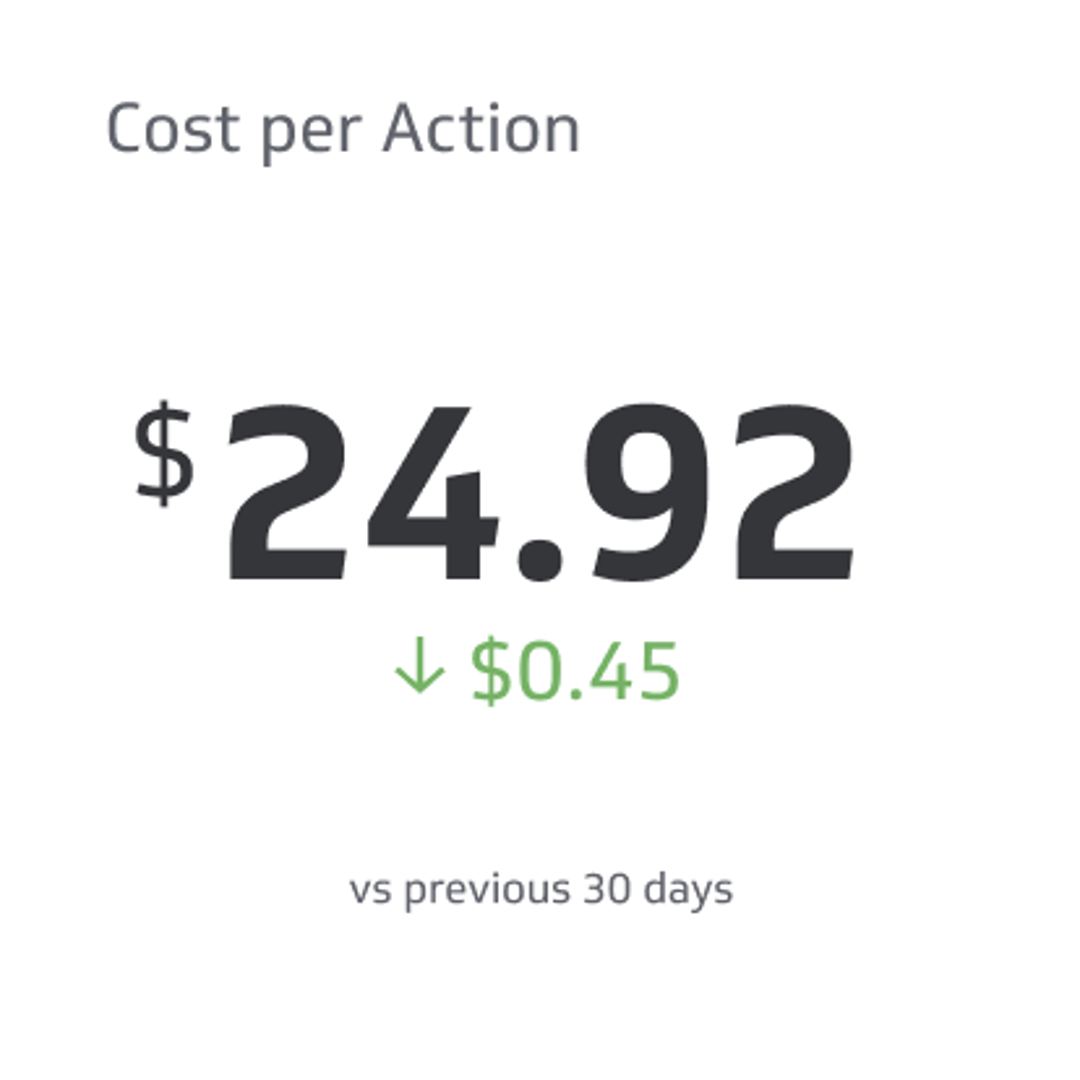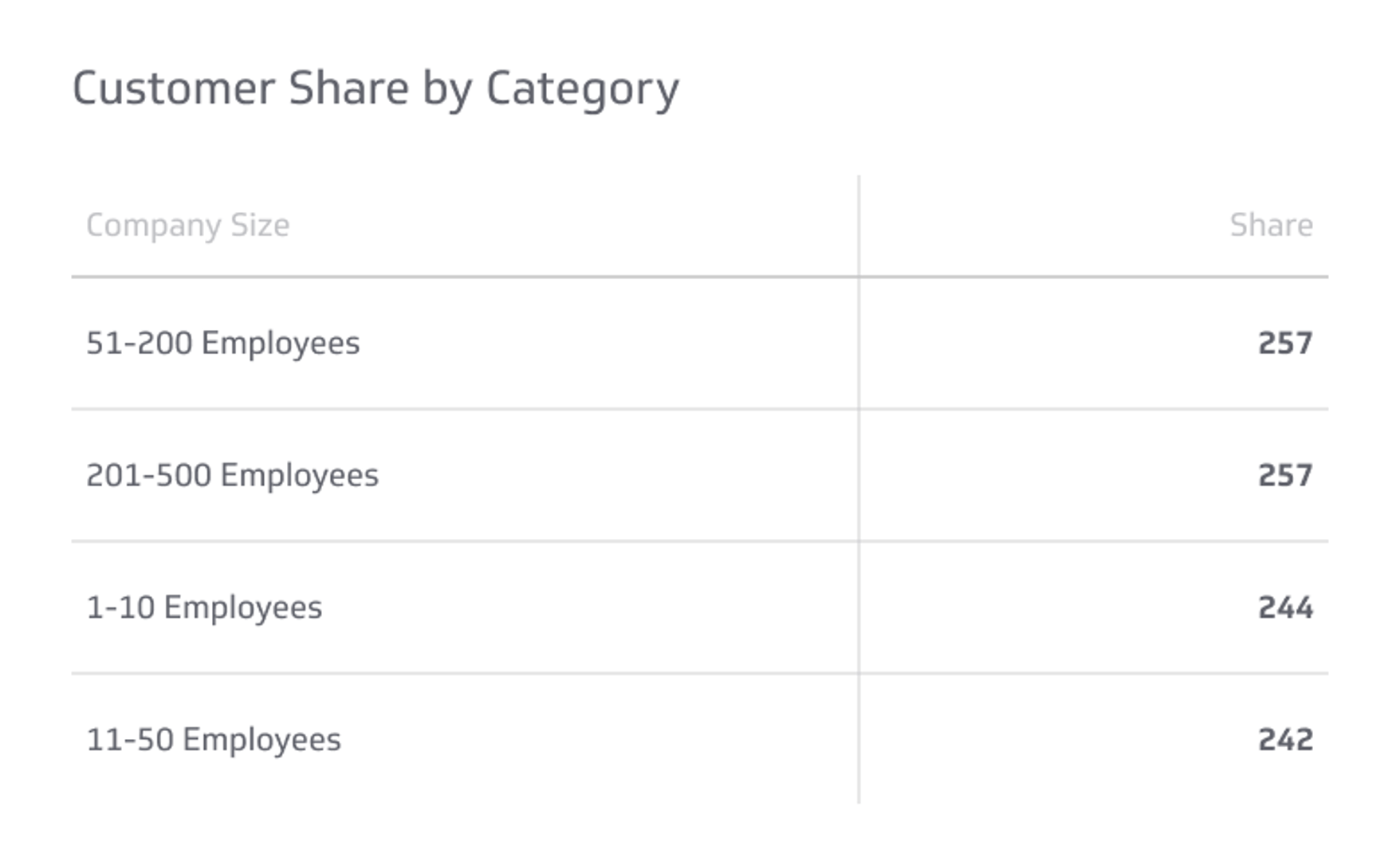Search Impression Share
Impression share is an advertising metric that helps you understand how well your ads perform versus other advertisements in the same area.
Track all your Digital Marketing KPIs in one place
Sign up for free and start making decisions for your business with confidence.

A search impression share formula can help you understand the effectiveness of your ads online, but why do impression shares matter, and what should you do with them? Here are the things you should know.
What Is an Impression Share?
Impression share is an advertising metric that helps you understand how well your ads perform versus other advertisements in the same area. The calculation is simple, as you look at the impressions your ad gets versus the overall potential impressions.
What Is an Impression?
An impression is a single time your ad gets displayed on a website or in an app. If you’re using something like Google AdSense, you usually stop getting impressions once you run out of your daily budget. Running out of budget stops engagement and lowers your overall impression share.
Types of Impression Shares
There are several main types of impression shares that you might enter into a search impression share formula to check your performance. Here are the common types.
Search Impression Share
The most basic type of impression share is the standard search impression share, which is your overall performance on Google’s Search Network.
The Search Network is a group of search websites, including Google’s results pages, and occasionally partner websites relevant to the topic. Using the Search Network is common for campaigns where you’re targeting people looking for specific products or services.
Display Impression Share
Google’s Display Network is not the same thing as its Search Network. The Display Network is significantly bigger, with Google citing a presence on over thirty-five million websites and applications they can reach.
The main difference is that while the Search Network is effective for people already searching for specific topics, the Display Network is more effective for outreach and finding a particular audience.
Getting Display Impression Share requires a higher budget because your ads can appear on far more sites. It’s also common to have a lower overall impression share because it has so many more people you could reach.
Rather than trying to reach everyone you possibly can, it’s best to try and find the point where you can maximize the impression share your budget allows. If you can get some firm numbers on performance, you might be able to get an increased budget for future campaigns.
Target Impression Share
Target Impression Share is a more focused version of the Search Network results, giving you the option to place your ad on the very top of the page, near the top, or anywhere on the search results page.
In some ways, you can liken this to the premium version of a typical ad. People are more likely to engage with the things they see first, so many companies are willing to pay a premium price for a prominent position.
Unlike some other options, Target Impression Share can help you get the exact impression share you want. It can be as high as 100%, although many companies find that going so high doesn’t provide an appropriate return on investment. Settling somewhere around 50% or 66% may be better.
Lost Impression Shares
Lost Impression Shares are a simple digital marketing metric that shows how many impressions you’re missing out on because your budget doesn’t allow them.
The thing to understand here is that tracking technology is good enough that you can usually get a good sense of how much more revenue you’d make if you had enough in your daily advertising budget. Working to improve your ads and budget can therefore provide an excellent return on your investment.
What Is a Good Impression Share?
Technically, a good impression share is whatever gives you the best return on your investment.
However, we can use some basic numbers for typical situations.
95% is about right for branded keywords, which include things like your company name. If users are looking for you, then you want to be sure they can find you. Branded keywords tend to be more reliable than other categories, so it’s worth having enough in your daily budget to support this.
80% is good for non-branded keywords that aren’t too competitive. That means you can get impressions for your main campaigns most of the time, but with some room to wiggle around and not max out your spending all the time.
However, highly-competitive keywords are a different matter. For these cases, a search impression of around 60% is more effective. Trying to maximize search impressions for the most expensive keywords is a bad idea. They have both high volume and high costs, so you’ll end up paying significantly more even at a lower impression rate.
What Is a Bad Impression Share?
As a rule of thumb, a bad impression share is anything less than 50%. There are many potential causes of a low score, from low-quality ads to a small daily budget. However, some companies may accept a low score for various reasons. Trying to get a fantastic score for dozens or hundreds of keywords can be expensive and self-defeating.
Are Higher Impressions Always Good?
No. While it may seem counterintuitive because marketing relies on frequent impressions among customers, having too many impressions can be bad for your business. Here’s why.
Some keywords do not convert customers as effectively as others. If you’re getting tons of impression shares for people who are only 20% as likely to buy as those using your primary keywords, you’re wasting a lot of money. Ads should go to keywords that perform.
Similarly, some keywords are too expensive to justify trying to have a good impression share, even if they perform well. For example, a HubSpot investigation found a legal ad of over one thousand dollars per click. Attorneys can only take on so many clients at a time, so having too many impression shares is difficult even for a high-salary profession.
Understanding Conversion Rate
Having good impressions is nice, but it doesn’t mean much if you have a low conversion rate.
As of late 2022, industries had an average conversion rate of 2.5% for online shopping. Food and beverage performed the best at about 4.6%, while home furniture performed the worst.
Display ads typically perform poorer than regular search ads, mainly because trying to reach people who aren’t currently interested in buying is harder by default. You can pinpoint a great customer, but if they don’t want to buy, there’s only so much you can do to convince them.
The important thing to recognize here is that the profit from your conversion rate needs to be high enough to pay for the other ads and your general business expenses. Anything with a positive return on investment is acceptable, but good performance involves finding the best ROI and constantly shuffling ad spending around to focus on that.
Frequently Asked Questions
Here are some common questions people have about the search impression share formula.
How do you increase Impression Share?
The best way to increase impression share is to raise your bid. The more you can outbid others, the more often Google will show your ad and give you what you want. Money goes a long way in modern advertising.
You can also increase your overall campaign budget, which lets you show your ad more times. These two factors work together. You want a bid high enough to succeed, with enough impressions shown to get your ideal ratio of conversions.
What are the two types of Search Impressions?
There are two main types of ways to count Search Impressions. The first is served impressions, where they’re counted when they’re sent to a publisher. However, the ad may not show on the user’s device.
The other format is downloaded impressions, where the impression triggers when it downloads for a user. This is usually lower than served impressions, but more accurate because it reflects what users see. Google AdSense uses download impressions for all metrics.
Related Metrics & KPIs


